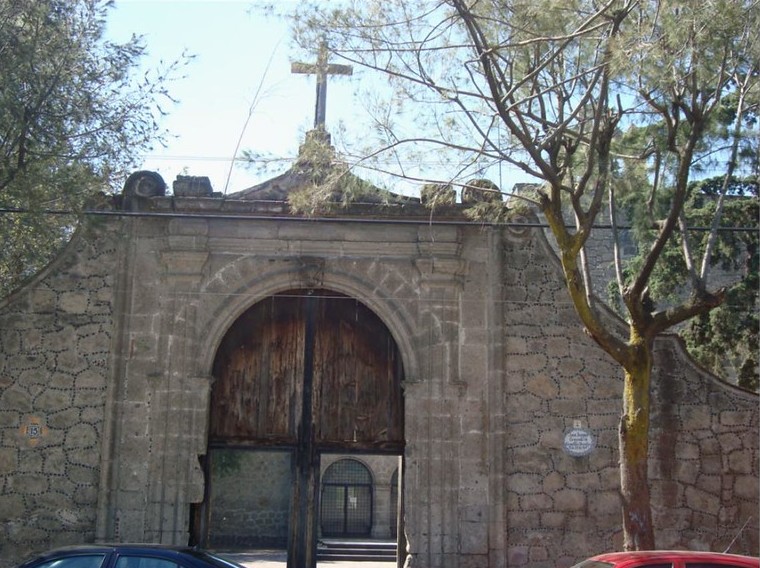
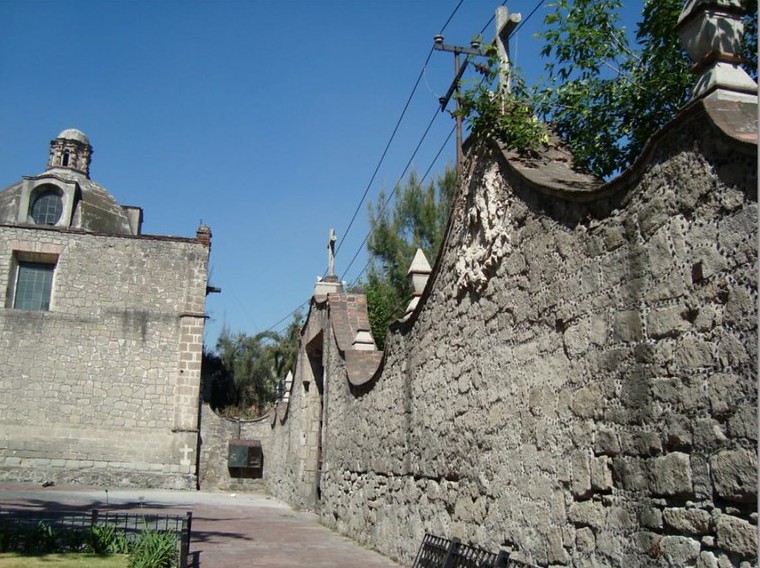
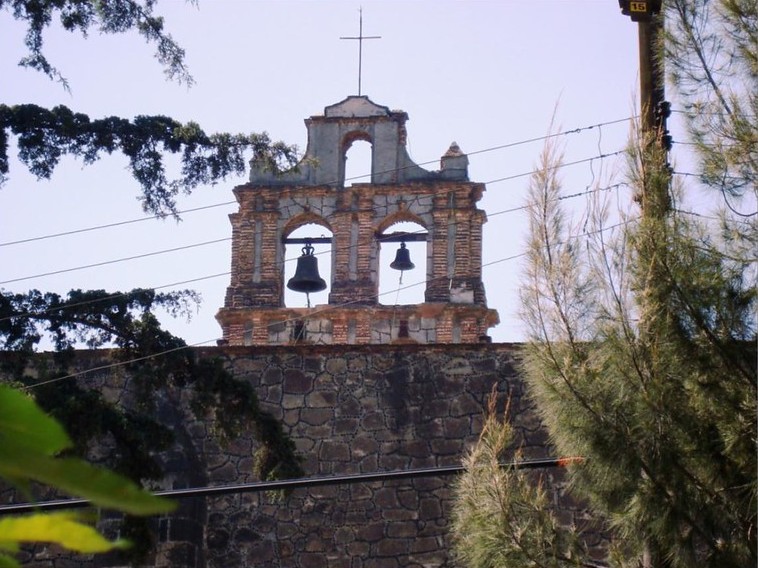
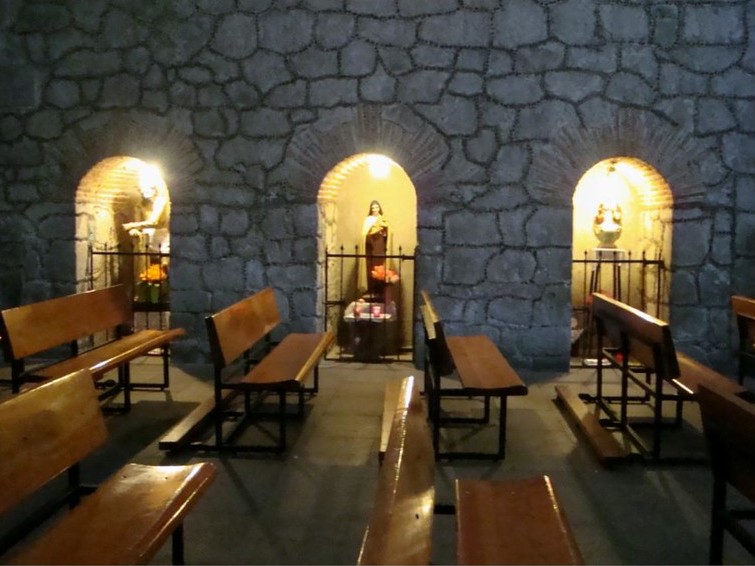
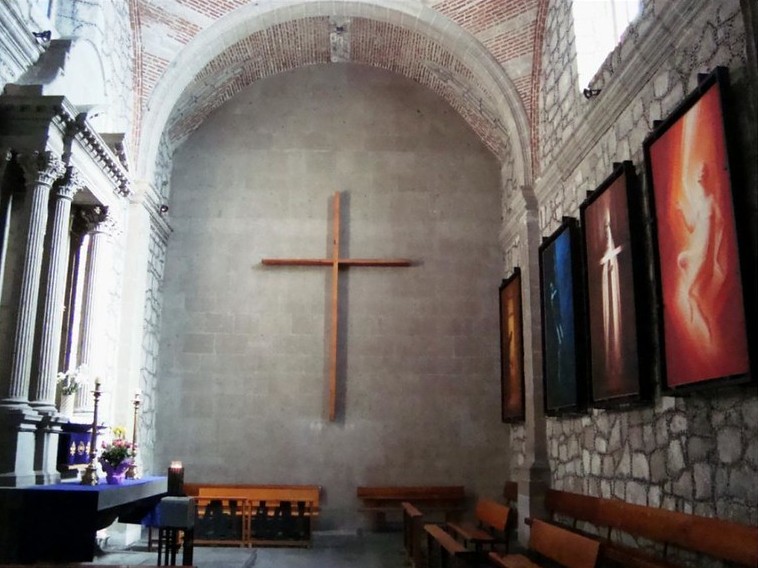
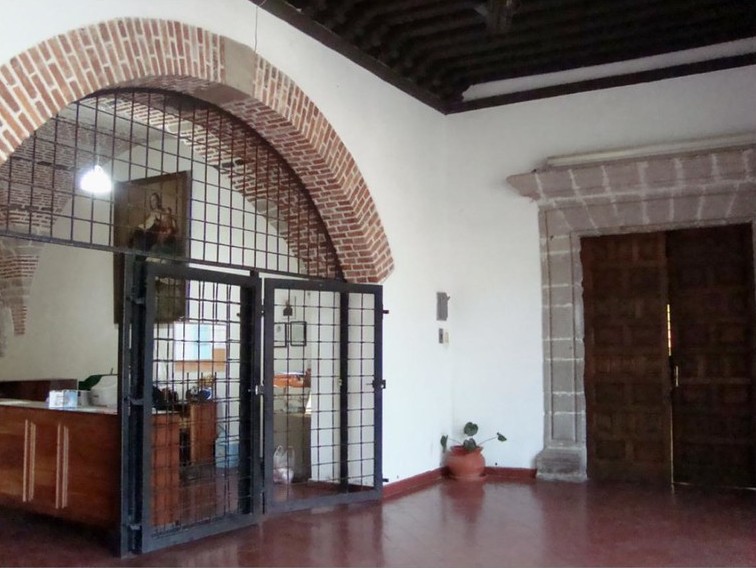
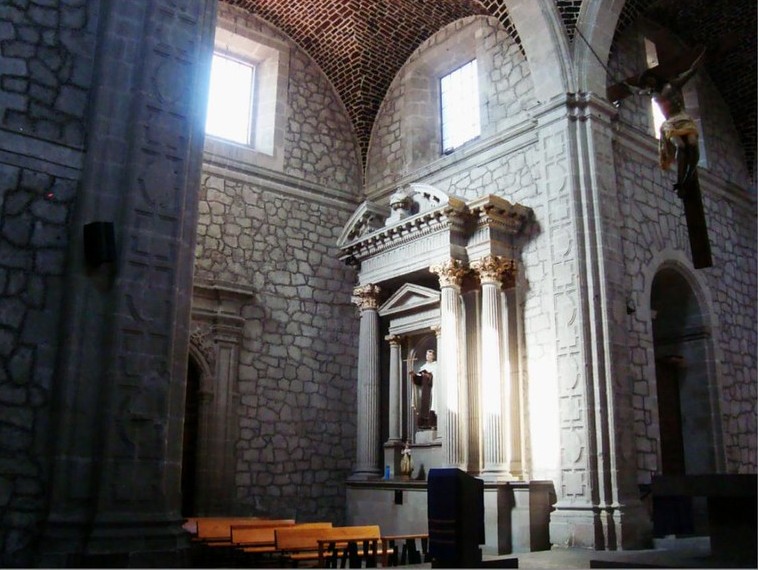
Photo: Catedrales e Iglesias/Cathedrals and Churches, Attribution 2.0 Generic (CC BY 2.0) license.
San Joaquín de Tacuba is a massive a Franciscan temple and monastery complex. It’s on the southern edge of the historical town of Tacuba. Today, the entrance is across the street from the colonia San Joaquín, though technically the entire complex is within a neighborhood called Deportivo Pensil.
Construction of the complex began at the end of the 17th century and continued through the mid-18th century. Declared a historical monument in 1933, it’s continued to serve as one of the most important seats of the Discalced Carmelites in Mexico. They originally arrived in Mexico with the support of Spanish King Phillip II in 1585.
This corner of Tacuba was renamed Sanctorum, and the Franciscans arrived here in 1689. It was intended then to serve as their chief college of philosophy and arts. It was the eleventh Carmelite institution in Mexico, and quickly became the center of the village. The monastery maintained a very good library of ancient works of theology. Surrounded by enormous walls, these enclosed gardens and orchards. Most of this land is today the Panteón Francés.
The temple within is nearly entirely of gray quarried stone laid out on a Latin cross plan. An enormous circular dome covers the transept. The façade is sober as was the tradition with Carmelite designs. A deep narthex leads eventually to the nave, but the three openings give way above to a choral window above which is a niche with a sculpture of Saint Anne, the grandmother of Jesus Christ. A belfry is on the southeast corner of the temple.
The complex is perhaps most famous, at least historically, for its cistern. This was intended to serve the orchard, and began as a pond in 1740. This was surrounded by a masonry wall. At 2,200 square-meters, it was filled from the nearby Remedios River.
The Reform Laws of the late 1850s meant that most of this land was abandoned. The French cemetery wasn’t begun until 1942, and the reservoir remains within are today in a state of disrepair. There have been recent plans to restore parts of it.
Much of the exterior of the San Joaquín de Tacuba complex can be seen from the Panteón Francés. The cemetery is, of course, quite a sight to behold in its own right. The persistent and the curious may also be permitted entry with a prior appointment, but as a working religious institution it’s not entirely open to the public.
 ocd_sanjoaquin@yahoo.com.mx
ocd_sanjoaquin@yahoo.com.mx
 55-55276053 or 5527-6054
55-55276053 or 5527-6054
 http://www.conventosanjoaquin.com.mx/
http://www.conventosanjoaquin.com.mx/
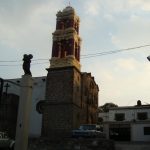
Nearest at 0.33 kms.

Nearest at 0.60 kms.

Nearest at 0.64 kms.
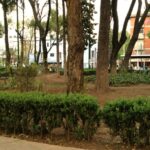
A neighborhood favorite just in from the old causeway landing.
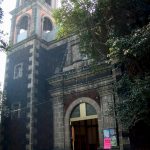
A Tacuba neighborhood church in Azcapotzalco...
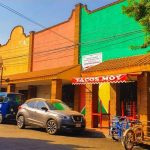
A giant neighborhood market in the old west of Tacuba...
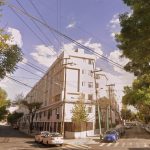
An age-old neighborhood of ancient Tacuba, today home to an enormous park...
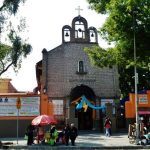
A church next to Mexico City's most famous tree...